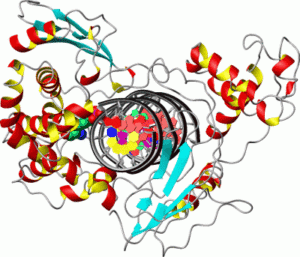 In this video from the HPC Advisory Council Australia Conference, Philipp Bayer from the University of Western Australia presents: The State of Bioinformatics in HPC in 2017.
In this video from the HPC Advisory Council Australia Conference, Philipp Bayer from the University of Western Australia presents: The State of Bioinformatics in HPC in 2017.
“In the last few years DNA sequencing technologies have become extremely cheap enabling us to quickly generate terabytes of data for a few thousand dollars. Analysis of this data has become the new bottleneck. Novel compute-intensive streaming approaches that leverage this data without the time-costly step of genome assembly and how UWA’s Edwards group leveraged these approaches to find new breeding targets in crop species are presented.”
Bioinformatics is commonly associated with the creation and maintenance of databases for the vast amount of information coming from laboratories, for example nucleic acid and protein sequence data. However, bioinformatics involves many more challenges. Complex tasks include analysis of sequence information, three-dimensional structure prediction and modelling of biomolecules, examination of evolutionary relationships and biological systems, processing and analysis of biomedical images, visualization, disease research and many more.
 Biology provides a computer scientist with a range of extremely interesting and very challenging problems. In bioinformatics, numerous computer science techniques ranging from applied mathematics and statistics to dynamic programming and artificial intelligence are incorporated in the development of novel algorithms.
Biology provides a computer scientist with a range of extremely interesting and very challenging problems. In bioinformatics, numerous computer science techniques ranging from applied mathematics and statistics to dynamic programming and artificial intelligence are incorporated in the development of novel algorithms.
In related news, the HPC Advisory Council Spain Conference takes place Sept. 29 in Santiago de Compostela.




